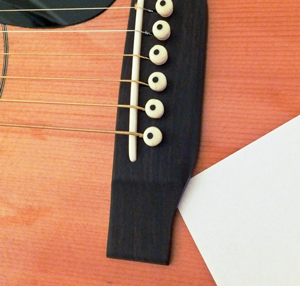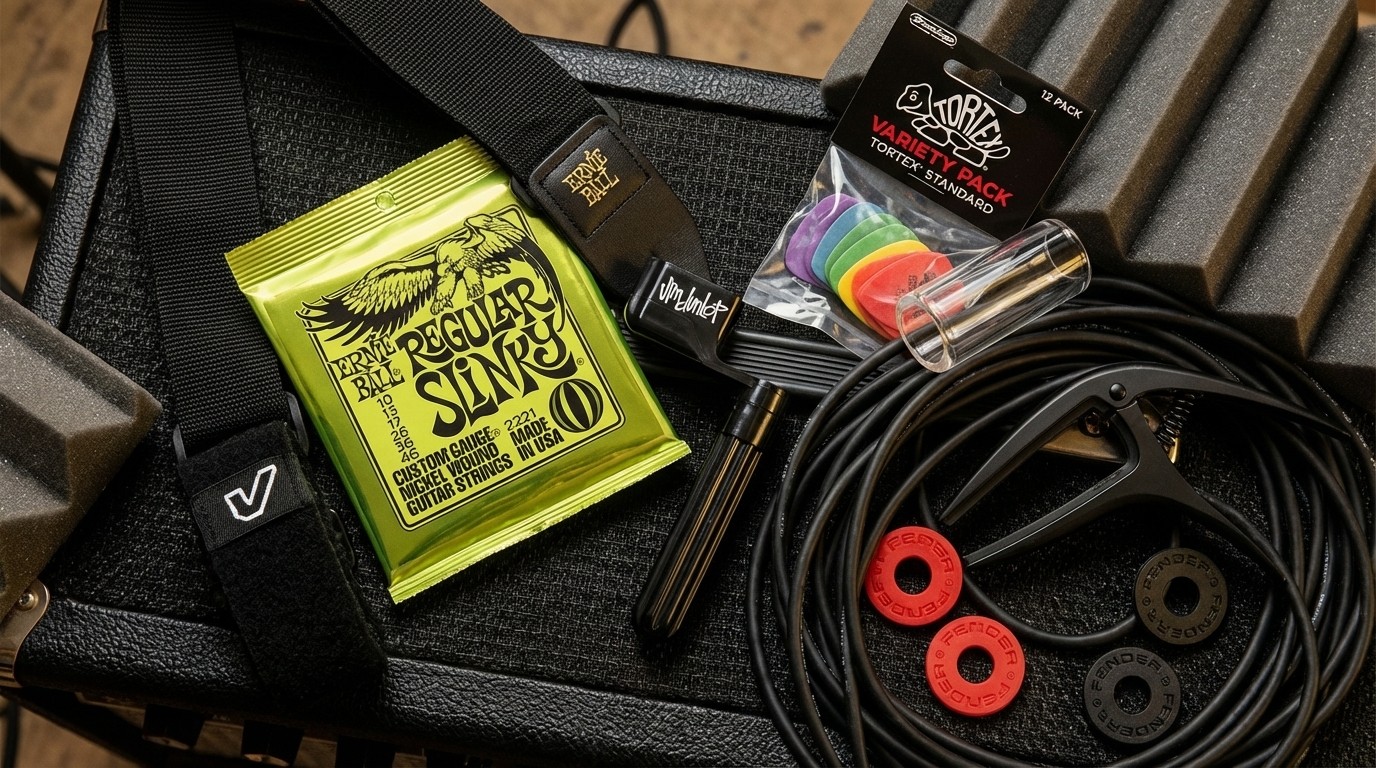Sound Advice: Fixing a Faulty Bridge

Dear Acoustic Nation: My bridge looks like its pulling off. It’s tilting forward to such a degree that I can slip a piece of paper under the back edge. In addition, the top of the guitar behind the bridge is rising a little. What should I do? In the meantime I’ve tuned my strings down a whole tone —two frets—to reduce the tension on the bridge.
-Charles L, Brooklyn, NY
Dear Charles:
Tuning down your strings was a smart idea. But you’d be really smart if you’d tune your strings all the way down, until they’re completely slack, and do it now! Then finish reading the rest of this article to see what the urgency is all about.
Let’s begin by looking at what may be causing your problem, and then see what may be done to help.
String tension is the culprit. Steel strings pull up against the top of the guitar with 125 to 175 pounds of tension, depending on the gauge. This is the big problem that faces guitar makers: strings want to pull those lovely bodies apart.
To fight back manufacturers rely on a system of supports, which we’ll get to in a moment, to help the top withstand the force of the strings. Unfortunately if this system is too heavy, weight wise, it can deaden the guitar’s sound. Building with a thicker top also can add strength, but again, to the detriment of the sound.
The goal is to find the perfect balance—to build a guitar that’s light enough to sound good, and heavy enough to withstand strong tension. Our problem is a result of the fact that guitars are built right on this edge.
All the latest guitar news, interviews, lessons, reviews, deals and more, direct to your inbox!
Fortunately guitar makers know what they’re doing so it doesn’t happen often. But if some weakness develops in any part of the system, it can bring the whole system down with it.
The bridge is only the first line of defense against the relentless pull of the strings. It’s a big block of glued-on wood that helps reinforce the guitar top and diffuse the force of the strings, as well as distribute the string vibrations to the top. But it doesn’t fight that battle alone.
Glued inside the guitar body beneath the bridge is a heavy reinforcing hardwood strip called the bridgeplate. Additional support for the top comes from the interior bracing, which in most recent modern designs passes over or alongside the bridge plate. Like the bridge, the bracing also serves the function of distributing string vibrations across the top.
This means that the bridge is only one element in a system of functionally integrated structures devoted to withstanding string tension.
A top that pulls up (this is called “bellying” by the way, and a little bit of it is normal) is a sign that the whole system may be at risk. The bridge plate may be defective. Braces may have cracked or come loose. Bridge and bracing joints, particularly on older guitars built with older glues may fail due to heat and humidity. Bridge or brace work may have shrunk—again, more likely in an older guitar.
Whatever is the case, it’s something that can be fixed, though it may not be cheap. Sometimes an inexpensive guitar that falls apart may not be worth fixing.

Now lets consider what you can do to avoid such problems in the future. First and foremost don’t overstring your guitar. Overstringing, of course, means habitually using strings that are too heavy for your guitar.
Most high end guitars are made to withstand a lifetime’s worth of tension typically engendered by medium (.012-.056) strings, but their warrantees become voice if heavy (.014 - .058) strings are used instead.
Just about no one uses heavy-gauge strings any more, although in pre-amplifier days big-band rhythm guitars used them to maximize the volume of their archtops. Today they’re generally found on heavily built resonator guitars. Both archtops and resonator guitars, it should be noted, use tailpieces designed to help keep the tension of heavy strings from pulling directly on the top.
Some vintage, lightly braced or just plain cheap guitars will live longer when fitted with light strings. In particular some of the inexpensive beginner-quality acoustic-electric guitars now on the market seem to me to be geared towards players comfortable with electric guitar gauges (starting at .010 or so).
Some acoustic-electric guitarists—especially beginners who don’t have a solidbody yet, like to string these guitars very lightly so they can mic solidbody-style string bending.
Secondly, observe all the normal precautions recommended to minimize trauma and excessive heat and humidity. A sharp blow can loosen or crack a brace. Climatic conditions can cause a brace to shrink loose, or its glue joint to fail. If you’re lucky it’ll rattle enough to notice and you’ll get it fixed sooner. If it stays silent, you might not notice until too late, after further symptoms of a more terminal nature manifests themselves.
In any case, pulled-up bridges and bellies are a potential condition that all guitarists face sooner or later, because guitars are essentially fragile instruments caught in a delicate balance between the conflicting demands of lightness and durability.
Got a burning question about acoustic guitar? Post it on our Facebook at www.facebook.com/acousticnationnews
